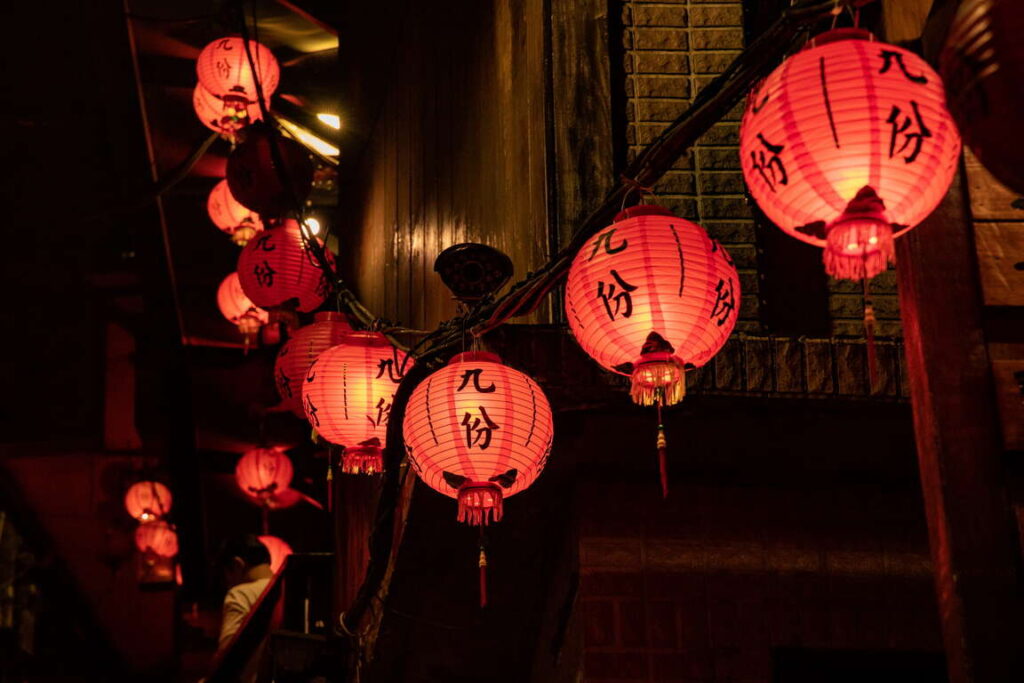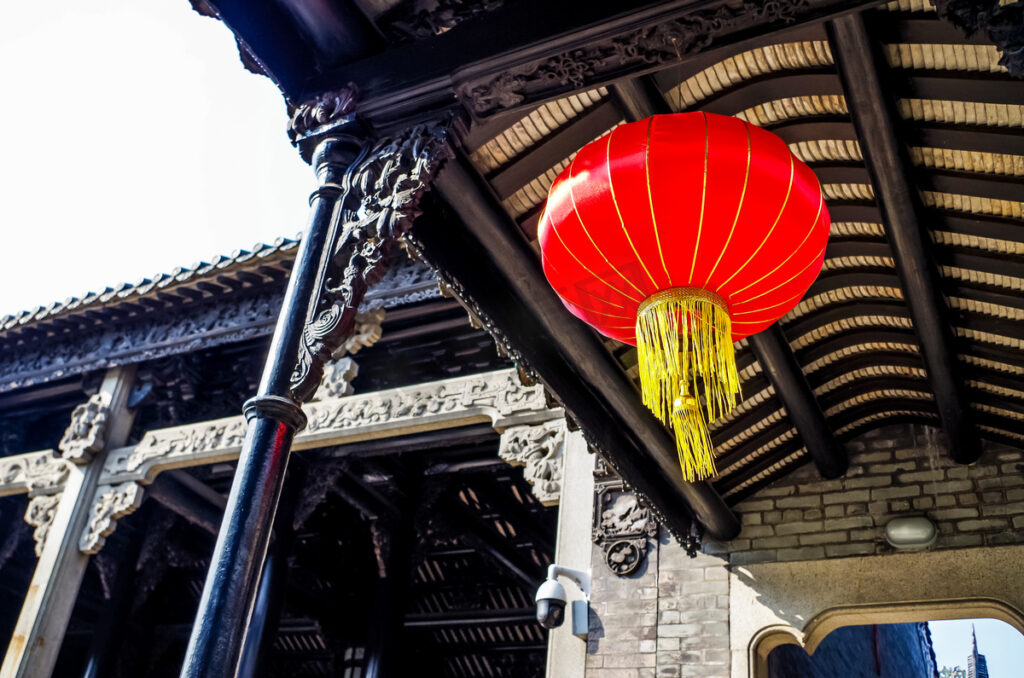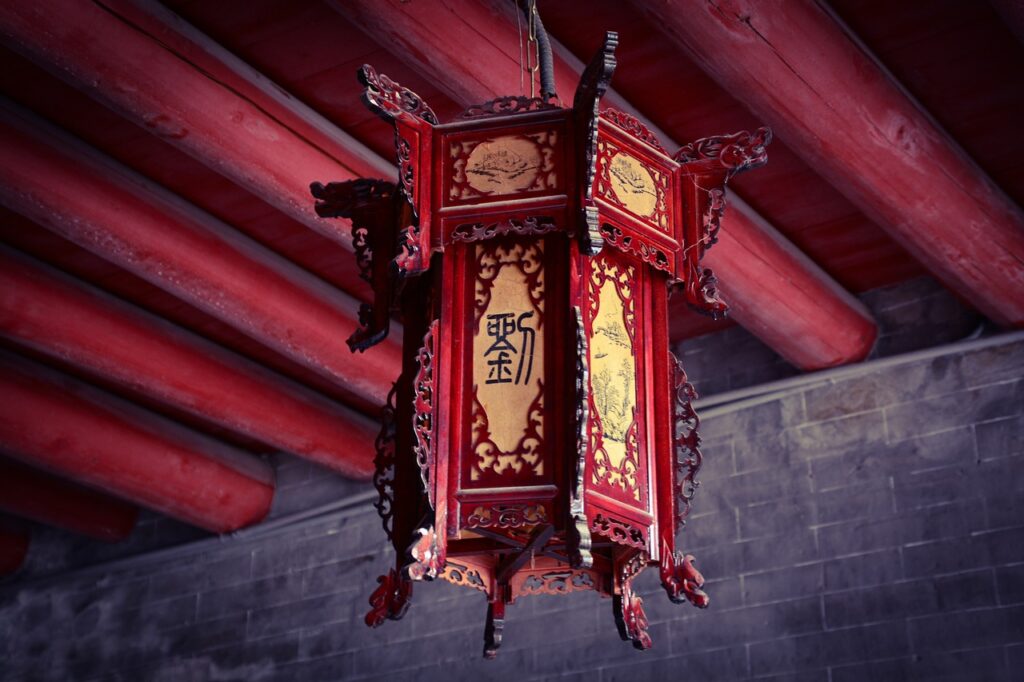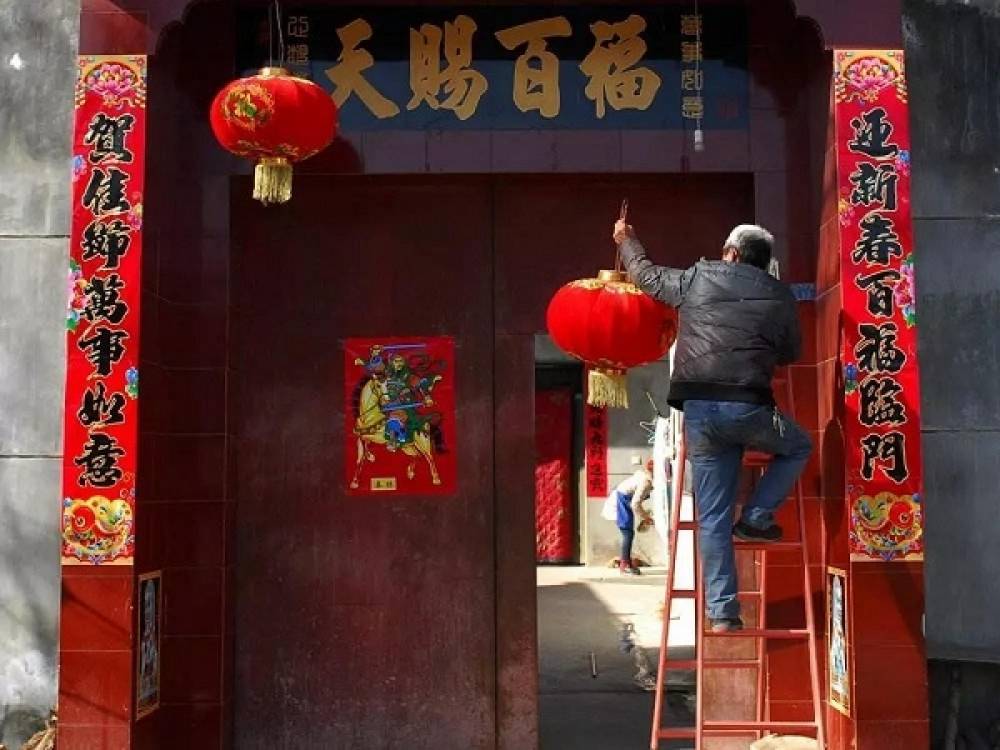In Chinese culture, the red lantern emerges as a radiant symbol of prosperity, vitality, and celebration. It is not just a beacon of light, but a vessel of ancient wisdom, elegantly combining artistry with profound symbolism. It illuminates spaces, hearts, and minds, casting a warm, reassuring glow that transcends the boundaries of the physical world and reaches into the realm of the spirit.
A red lantern is not merely a decoration; it’s an instrument of harmony in the practice of Feng Shui. Revered for its auspicious color and luminosity, it helps shape the subtle energies, or Qi, that course through our spaces. It stands as a guardian, a guide, and a harbinger of good fortune, channeling positive energy and warding off negativity.
History of Chinese red lanterns
The history of red lanterns in China spans across centuries, deeply intertwined with the socio-cultural fabric of Chinese civilization. These lanterns, traditionally red in color and often ornately decorated, are not merely objects of visual fascination, but also symbolic entities embodying historical, societal, and even philosophical meanings.
The genesis of the Chinese lantern can be traced back to the Han Dynasty (206 BC – 220 AD), where they were initially used for practical purposes of light provision. The earliest lanterns were simple and functional, generally made of silk, paper, or animal hide stretched over a bamboo, wood, or metal frame. The source of light inside was usually a candle or oil lamp. The choice of red, which became the signature color of Chinese lanterns, has its roots in the traditional color symbolism of Chinese culture. Red represents joy, vitality, celebration, luck, and prosperity, which align with the Chinese philosophy of embracing life’s affirmative aspects.
By the Tang Dynasty (618–907 AD), lanterns had become an integral part of Chinese society, used in temples, palaces, shops, and streets. This period also marked the expansion of lantern use beyond functional purposes towards more ceremonial and decorative contexts. The Lantern Festival (元宵節, Yuánxiāojié), celebrated on the 15th day of the first lunar month, became a significant social event. During this festival, lanterns of various shapes and sizes illuminated the night, becoming symbols of hope and rejuvenation.
The Song (960–1279 AD) and Ming (1368–1644 AD) Dynasties witnessed further development in the design and craftsmanship of lanterns. They became more elaborate and aesthetically appealing, often adorned with calligraphy, paintings, and cut-out designs. The red lantern also found its place in operas, military communication, and festival celebrations, augmenting its societal reach and symbolism.
The cultural significance of the red lantern has not waned over the centuries. It continues to be a salient feature of the Chinese New Year and other celebrations, symbolizing prosperity and bright future. They are also extensively used in traditional Chinese weddings to symbolize a happy and bright married life.
In contemporary times, the red lantern has transcended its national boundaries to become a global symbol of Chinese culture and hospitality. Today, these lanterns are not only used in traditional celebrations but have also found a place in everyday home decor and public spaces worldwide, representing a unique blend of functionality, aesthetics and cultural heritage.
Meaning of red lanterns in Feng Shui
The practice of Feng Shui, an ancient Chinese system of geomancy, assigns profound significance to the color, location, and arrangement of objects within a given space. These principles are believed to balance the surrounding energies (Qi) and bring forth harmony, prosperity, and well-being. The red lantern, a traditional Chinese artifact, has been prominently incorporated into the Feng Shui practice due to its color, luminosity, and symbolic representations.
The color red in Feng Shui is a potent symbol of life energy, passion, prosperity and happiness. Corresponding to the Fire element, one of the five vital elements in Feng Shui, red is believed to stoke enthusiasm, stimulate activity, and generate positive energy. Therefore, red lanterns, by virtue of their color, play a role in enhancing these attributes.
Furthermore, lanterns as light sources serve to symbolize illumination and the dispelling of darkness, both physically and metaphorically. The light within the lantern represents Yang energy in Feng Shui, signifying warmth, activity, and openness. By producing light, red lanterns are considered to invigorate the Qi flow, stimulate positivity, and ward off negative energy. In Feng Shui, a well-lit space is believed to encourage a steady flow of prosperity and good luck.
In terms of symbolic representations, red lanterns, as discussed earlier, stand for joy, vitality, and celebration in Chinese culture. Their use in significant life events, such as the Lunar New Year and weddings, underscores their role as bearers of good fortune and happiness. These underlying cultural symbols resonate well with the Feng Shui philosophy of harmony and balance, thereby enhancing the importance of red lanterns.
From a spatial perspective, the placement of red lanterns is equally critical in Feng Shui. They are typically hung in the south, the direction associated with recognition and fame, as per the Bagua, an essential Feng Shui energy map. However, their placement may vary depending on the specific Feng Shui goals, such as enhancing career prospects (north), fostering relationships (southwest), or promoting health (east).
Types of Chinese red lanterns
Chinese lanterns historical evolution and wide-ranging use in various social, ceremonial, and festive contexts have resulted in a diverse array of lantern types.
- Hanging Lanterns (吊灯, Diaodeng): As the name suggests, these lanterns are designed to hang from ceilings, awnings, or tree branches. They are primarily used outdoors, and their strategic placement often aligns with the principles of Feng Shui. The hanging lanterns can be round or cylindrical, made predominantly from silk, paper, or even glass. According to Feng Shui, they help to lift and distribute the Qi energy, promoting a harmonious flow within the environment.
- Palace Lanterns (宫灯, Gongdeng): Originating from the royal courts, Palace lanterns are known for their exquisite craftsmanship and intricate detailing. They are often hexagonal or octagonal and made from high-quality materials like silk, glass, and wood. Incorporating these lanterns can add an element of aesthetic elegance to any space while also facilitating a subtle and sophisticated Qi flow, enhancing the ambiance of tranquility and prosperity.
- Shadow Lanterns (皮影灯, Piyin Deng): These lanterns are unique for their double-layered design, made of translucent animal hide or parchment. When lit, they cast beautiful shadows, creating a serene and alluring atmosphere. In Feng Shui, these shadows symbolize the dynamic interplay between Yin (passive, shadowy) and Yang (active, bright) energies, promoting a balanced and harmonious environment.
- Red Honeycomb Lanterns (蜂窝红灯笼, Fengwo Hong Denglong): Made from red paper that’s carefully cut and folded into a honeycomb pattern, these lanterns have a distinctive aesthetic appeal. When lit, they offer a warm, soothing light. From a Feng Shui perspective, the honeycomb shape symbolizes unity, cooperation, and harmony, aligning with the philosophy of interconnectedness and mutual dependence.
- Floating Lanterns (天灯, Tiandeng): These are small hot air balloons traditionally made of paper, with a candle inside that creates enough heat for the lantern to rise in the air. Although their use should comply with local regulations due to safety concerns, from a Feng Shui viewpoint, these floating lights can symbolize the ascension of worries and the welcoming of positive energy.
- Tomato Light Lanterns (番茄灯, Fanqie Deng): Named after their tomato-like shape, these lanterns are small and cute, often used as a decorative accent in modern interiors. In Feng Shui, their round form is considered an embodiment of completeness and unity, enhancing the Qi’s smooth flow.
The diverse types of Chinese red lanterns offer a blend of functionality, aesthetics, and cultural symbolism. Each type holds its unique significance within the broader framework of Feng Shui, playing a role in directing the energy flow, balancing Yin and Yang energies, and promoting a harmonious and prosperous environment. Therefore, the choice of lantern type should align with the specific Feng Shui objectives and the overall aesthetic appeal of the space.
How to hang red lanterns for good luck and wealth
In the context of Feng Shui, the strategic placement and use of red lanterns can harness the flow of energy, attracting luck, prosperity, and positive energies. However, the correct placement requires an understanding of the Bagua (the Feng Shui energy map of a space) and consideration of the lantern’s purpose.
- Identify the auspicious areas: In Feng Shui, different areas of a house or business relate to different aspects of life. For luck and wealth, focus on the southeast sector, known as the Wealth sector. Hanging red lanterns in this area can activate and stimulate the energy related to financial prosperity. Additionally, the south area, corresponding to recognition and fame, can also be considered.
- Pairing the lanterns: The number of lanterns also plays a crucial role in Feng Shui. It’s recommended to hang lanterns in pairs, as the number ‘two’ symbolizes a balance, reflecting the dual nature of Yin and Yang. This balance can promote harmony, inviting prosperity and good fortune.
- Choose the appropriate lantern: Although red lanterns are generally auspicious, choosing lanterns with specific symbols can increase their potency. For instance, lanterns featuring the Chinese characters for “wealth” (财), “luck” (福), or “longevity” (寿) can help attract the corresponding energies.
- Mind the height: The height at which the lanterns are hung is also significant. They should be placed high enough to allow energy to flow underneath but not so high that their light and warmth cannot be felt. This encourages an upward movement of positive Qi, bringing in growth and expansion.
- Maintenance and care: Ensure the lanterns are always clean and well-lit. A neglected or dirty lantern can accumulate negative energy. Regularly replace burnt-out bulbs or candles and repair any damage immediately. In Feng Shui, a well-maintained item indicates respect and attention, which in turn can attract positivity, wealth, and good luck.
- Consider special occasions: Hanging lanterns during certain lunar events, such as the New Year or Lantern Festival, can further amplify their effects. These times are considered particularly auspicious in Chinese culture and Feng Shui, making them ideal for attracting luck and wealth.
LotusBuddhas please note that, hanging red lanterns in Feng Shui is more than a decorative act. It involves a careful consideration of location, number, type, height, maintenance, and timing. If you following these guidelines, you can effectively use red lanterns as a tool to stimulate the flow of positive energies, inviting wealth, prosperity and good luck into the space.
Things to avoid when using red lanterns in Feng Shui
The use of red lanterns in Feng Shui also calls for careful considerations. Misplacement or inappropriate use of these symbolic artifacts can result in imbalances or undesirable energy flow.
- Avoid clutter: Overcrowding a space with too many lanterns can create an overwhelming energy that leads to clutter, which is counterproductive in Feng Shui. Clutter is believed to obstruct the free flow of Qi, thereby negatively impacting harmony and balance. Thus, it’s crucial to use an appropriate number of lanterns that suits the space and maintains its aesthetic appeal.
- Avoid poor quality: Using cheap, low-quality lanterns or ones in a state of disrepair can generate negative energy. Feng Shui encourages the use of items that are well-made and well-maintained. Damaged or low-quality lanterns can symbolize negligence and disarray, which may inadvertently attract negative energies.
- Avoid wrong placement: Each direction in Feng Shui corresponds to different life aspects. Therefore, it’s vital to avoid hanging red lanterns in areas that do not align with their symbolic meanings. For instance, placing a wealth-attracting lantern in a sector that corresponds to quietude and rest, like the bedroom, may disrupt the energy balance.
- Avoid unbalanced numbers: The number of lanterns can significantly influence Feng Shui energy. Traditionally, even numbers, especially pairs, are considered to promote balance and harmony. Therefore, it is generally advisable to avoid hanging an odd number of lanterns, as this may suggest imbalance and discord.
- Avoid inauspicious symbols: While red lanterns are usually beneficial in Feng Shui, those adorned with inauspicious symbols or images could bring negative energies. For instance, images symbolizing violence, sadness, or struggle should be avoided.
- Avoid blocking pathways: Lanterns should never be hung in places where they block walking paths or doorways. Not only can this pose a practical inconvenience, but it may also symbolically obstruct the free flow of Qi, leading to stagnation or blockage of positive energy.
In conclusion, in the dance of energies that Feng Shui orchestrates, red lanterns act as powerful conductors of Qi, invigorating spaces with a potent mix of warmth, vitality, and good fortune. Each lantern serves as an energetic nexus, channeling auspicious energy, promoting balance, and warding off adverse influences.










